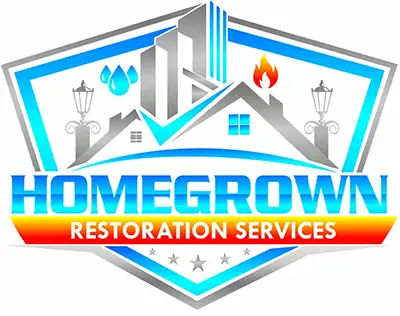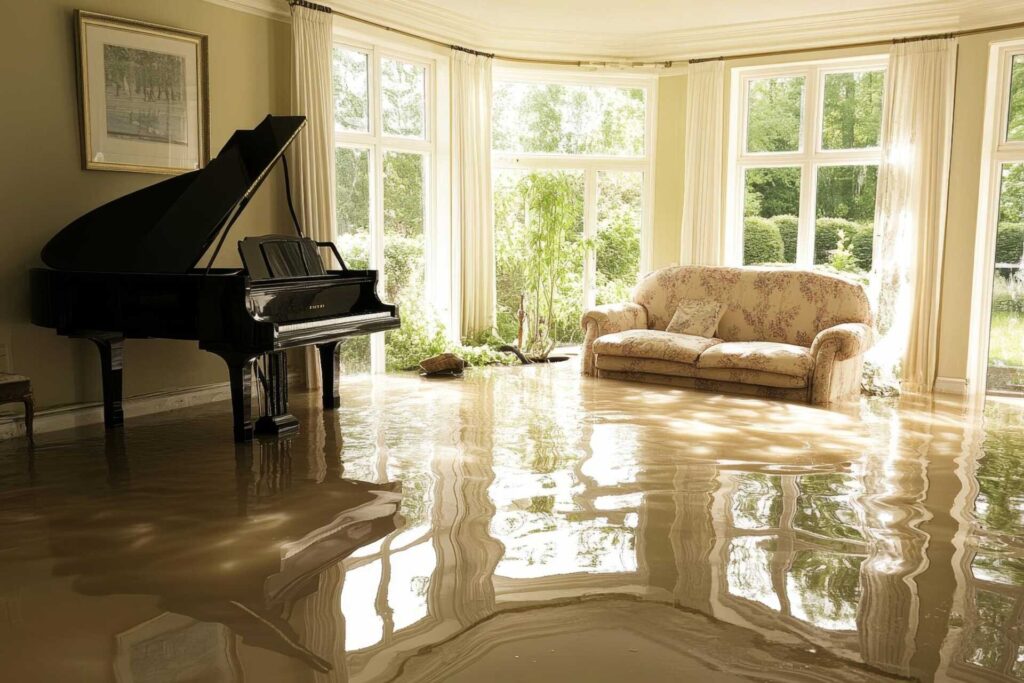When you’re faced with a flooded home, you might consider grabbing a mop and bucket to tackle the problem yourself, but have you considered the advantages of hiring professionals for water extraction? These experts come equipped with tools and techniques that far surpass typical DIY methods, ensuring rapid removal of water and prevention of further damage. They work quickly and detect and mitigate hidden damages that might not be immediately apparent. Now, you might wonder what makes their approach so effective and how it could potentially save you from future headaches—well, let’s just say the benefits extend beyond merely drying out your floors.
Key Takeaways
- Professionals use advanced equipment to rapidly and effectively remove water, minimizing structural damage and mold risks.
- Expert assessments ensure all hidden moisture is identified and addressed, preventing overlooked damages that can escalate costs.
- Professional water extraction techniques are more efficient, reducing long-term costs associated with DIY attempts that may fail.
- Quick professional response prevents health hazards by inhibiting the growth of mold and bacteria in water-logged areas.
- Utilizing professional services facilitates thorough documentation for insurance claims, ensuring a fair and efficient process.
The Risks of DIY Water Removal
While tackling water removal yourself might seem cost-effective, it often leads to further complications and risks. You’re not merely dealing with puddles but potentially hazardous situations that can affect your health and wallet.
Water damage, especially when it involves flooding, can quickly escalate, exposing you to serious health hazards like mold and bacteria growth. These aren’t just unpleasant; they can cause respiratory issues and other health problems if not handled correctly.
Moreover, the cost implications of DIY water removal are often underestimated. You might save on initial expenses, but the long-term costs due to inadequate removal and drying can be substantial.
Water can seep into hidden areas, undermining the structural integrity of your home. Later, you might find yourself facing hefty bills for mold remediation, repairs to warped floors, and damaged electrical systems—all of which could have been minimized with professional intervention.
Remember, water extraction isn’t only about removing water; it’s about ensuring your home is thoroughly dried and restored.
Professionals have the tools and expertise to gauge the extent of moisture damage, often unseen to the untrained eye, and take the necessary steps to prevent future issues. They’re equipped with industrial-grade equipment that extracts water efficiently and reduces the risk of lingering moisture, which is vital to protect your home and health.
Speed and Efficiency of Professionals
When you hire professionals for water extraction, you’re not merely paying for speed; you’re investing in their ability to rapidly remove water using advanced equipment.
This prompt action minimizes structural damage and reduces mold risks, ensuring your home’s integrity. Their specialized tools and techniques vastly outpace anything available to the average homeowner, making the process both swift and thorough.
Rapid Water Removal
In the aftermath of a flood, rapid water removal is vital to mitigate further damage to your home. Engaging professionals in this task ensures that the process is quick and thorough.
Their expertise in water drainage and moisture assessment means they can identify and address hidden problems before they escalate.
When you choose professional water extraction, you’re not merely hiring a service; you’re joining a community that understands and prioritizes your safety and well-being.
These experts come equipped with the knowledge to efficiently manage the removal process, ensuring that every corner of your home is free from water and moisture.
This is essential because the longer water sits, the more damage it can do, leading to mold growth and structural issues.
Advanced Equipment Utilization
Professionals frequently utilize advanced equipment to enhance both the speed and efficiency of water extraction processes. This isn’t merely about getting the job done quickly; it’s about ensuring that your home is restored without compromising water quality. When you’re facing a flooded home, you’re not merely a client—you’re part of a community that values swift, effective solutions.
High-tech pumps, dehumidifiers, and hygrometers are calibrated specifically to handle large volumes of water and moisture with precision. This means that the job isn’t simply done fast; it’s done right. Water is extracted thoroughly, reducing the risk of mold and structural damage that can linger if moisture remains. You’ll feel reassured knowing that your space is being treated with the utmost care.
Moreover, equipment maintenance is key in professional water extraction. Regular checks and updates ensure that machines operate at peak efficiency, which in turn protects your home. You can trust that the tools used are state-of-the-art and meticulously maintained.
Choosing professional water extraction isn’t merely about cleaning up after a flood. It’s about being proactive in your home’s recovery, ensuring every step is optimized for quality and speed. You’re not going through this alone; you’ve got a team equipped to bring your home back to its best.
Advanced Equipment and Techniques
Utilizing advanced equipment and techniques is essential for effective water extraction in flooded homes. When you’re facing a flood, the speed and efficiency of the response are vital, not just for the safety of your home but also for the environmental impact and preservation of water quality.
Let’s explore the specifics that make professional water extraction indispensable:
-
High-Efficiency Water Extractors: These powerful machines remove water swiftly, minimizing structural damage and reducing the risk of long-term issues.
-
Infrared Cameras: These tools enable professionals to detect hidden moisture that can’t be seen with the naked eye, ensuring no water is left behind.
-
Hygrometers and Moisture Detectors: Accurate measurement of moisture levels helps in efficiently drying out the home, vital for maintaining indoor air quality and preventing further damage.
-
Eco-Friendly Disposal Methods: Professionals use sustainable techniques to dispose of water, ensuring that the environmental impact is minimized and that water quality is preserved.
Mold Prevention Strategies
After addressing water extraction, it’s vital to implement mold prevention strategies to safeguard your home’s health and integrity. Mold growth can rapidly become an issue in damp environments, making it important to focus on maintaining low humidity levels and ensuring your home stays dry.
To effectively prevent mold, you’ll need to understand the key factors that contribute to its development. Here’s a concise guide laid out in a simple table to help you stay organized and proactive:
| Strategy | Description | Benefit |
|---|---|---|
| Dehumidification | Use dehumidifiers to maintain indoor humidity below 50%. | Reduces mold growth potential. |
| Ventilation | Increase airflow with fans and open windows when possible. | Helps evaporate residual moisture. |
| Inspection | Regularly check hidden areas for moisture, like crawl spaces. | Early detection of mold formation. |
| Maintenance | Fix leaks and eliminate water accumulation sites. | Prevents mold-friendly conditions. |
Ensuring Structural Safety
Once you’ve implemented mold prevention strategies to ensure the health of your home environment, it’s equally important to assess the structural integrity of your property.
Water damage can silently compromise the strength and stability of your home, leaving you and your family in potential peril. Securing the structural safety of your home isn’t merely about peace of mind but about protecting your haven and the memories it holds.
To effectively evaluate and reinforce the structural integrity of your home, consider the following steps:
-
Foundation Assessment: Begin with a thorough examination of the foundation. Look for signs of water infiltration such as cracks or shifts in the foundation walls. These can indicate serious issues that need immediate attention.
-
Inspect Structural Supports: Check all visible supports, beams, and pillars for warping, rot, or corrosion. The strength of these elements is essential for maintaining the overall stability of your home.
-
Assess Walls and Ceilings: Look for any bowing or discoloration on walls and ceilings, as these can be indicators of underlying structural damage caused by moisture.
-
Professional Evaluation: Finally, hire a structural engineer to conduct a detailed assessment. This professional can provide an expert evaluation of any damage and recommend specific repairs or reinforcements that might be necessary.
Addressing these areas promptly secures the structural integrity of your home and fosters a sense of security and belonging among family members, knowing their home is safe and sound.
Act now to protect your most valuable asset and reassure everyone who lives under its roof.
Handling Insurance Claims
Maneuvering insurance claims can often feel overwhelming, but it’s important for recovering the costs of water damage repairs. When you’re faced with a flooded home, knowing your insurance coverage and understanding the claim process are essential to making sure you’re not left out of pocket.
First off, it’s important to promptly report the damage to your insurance company. Delaying can also worsen the damage but also potentially affect your claim’s approval. Document everything, taking photos and notes of all damages. These records are your proof and support during the claim process, helping to ensure a fair assessment by the insurance adjuster.
Here’s a handy table to guide you through key actions and their importance:
| Action to Take | Importance |
|---|---|
| Report damage immediately | Prevents claim disputes, secures prompt help |
| Document everything thoroughly | Ensures thorough claim documentation |
| Review your insurance policy | Clarifies coverage, avoids surprises |
| Communicate regularly | Keeps you updated, avoids miscommunication |
As you navigate this process, it’s essential to review your policy thoroughly. Understand what is and isn’t covered under your specific insurance plan. This knowledge empowers you to advocate for yourself, making sure that your claims aren’t unjustly denied or underpaid.
Lastly, maintain open lines of communication with your insurance adjuster. Frequent updates can provide reassurance and clarity, helping you feel part of a community working towards the restoration of your home. This journey, while challenging, is a journey you have to face alone; your insurance is there to support you, just as it should.
Recap
In the wake of a flood, envision your home swiftly and safely restored, free from the lurking threats of mold and structural damage. By choosing professional water extraction, you’re clearing puddles and securing your sanctuary. These experts, armed with cutting-edge tools, work rapidly to shield the bones of your home and keep the air pure. Let them navigate the intricate insurance processes, ensuring you’re repaired and protected. Trust in their precision; breathe easier in your renewed space.

